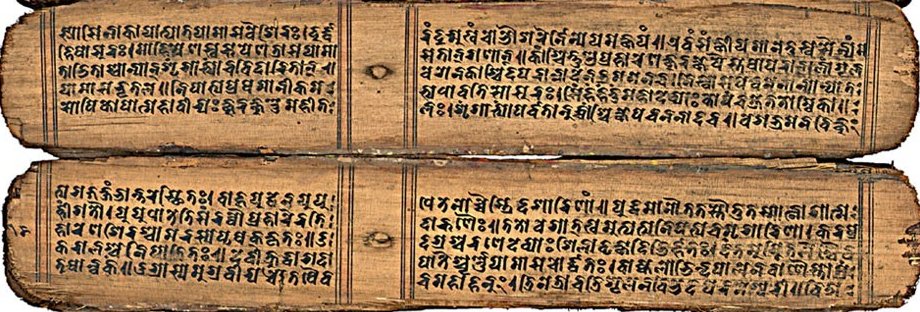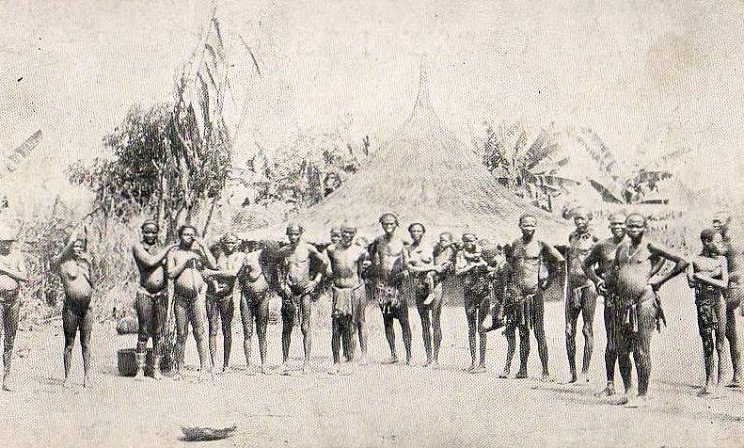|
To Language
To is an unclassified Mbum language of northern Cameroon and the Central African Republic. It is only used as a second language A person's second language, or L2, is a language that is not the native language (first language or L1) of the speaker, but is learned later. A second language may be a neighbouring language, another language of the speaker's home country, or a fo ..., as the secret male initiation language of the Gbaya. References Languages of Cameroon Mbum languages Initiation languages Unclassified languages of Africa {{Cameroon-lang-stub ... [...More Info...] [...Related Items...] OR: [Wikipedia] [Google] [Baidu] |
Cameroon
Cameroon (; french: Cameroun, ff, Kamerun), officially the Republic of Cameroon (french: République du Cameroun, links=no), is a country in west-central Africa. It is bordered by Nigeria to the west and north; Chad to the northeast; the Central African Republic to the east; and Equatorial Guinea, Gabon and the Republic of the Congo to the south. Its coastline lies on the Bight of Biafra, part of the Gulf of Guinea and the Atlantic Ocean. Due to its strategic position at the crossroads between West Africa and Central Africa, it has been categorized as being in both camps. Its nearly 27 million people speak 250 native languages. Early inhabitants of the territory included the Sao civilisation around Lake Chad, and the Baka hunter-gatherers in the southeastern rainforest. Portuguese explorers reached the coast in the 15th century and named the area ''Rio dos Camarões'' (''Shrimp River''), which became ''Cameroon'' in English. Fulani soldiers founded the Adamawa Emirate ... [...More Info...] [...Related Items...] OR: [Wikipedia] [Google] [Baidu] |
Central African Republic
The Central African Republic (CAR; ; , RCA; , or , ) is a landlocked country in Central Africa. It is bordered by Chad to the north, Sudan to the northeast, South Sudan to the southeast, the DR Congo to the south, the Republic of the Congo to the southwest, and Cameroon to the west. The Central African Republic covers a land area of about . , it had an estimated population of around million. , the Central African Republic is the scene of a civil war, ongoing since 2012. Most of the Central African Republic consists of Sudano-Guinean savannas, but the country also includes a Sahelo- Sudanian zone in the north and an equatorial forest zone in the south. Two-thirds of the country is within the Ubangi River basin (which flows into the Congo), while the remaining third lies in the basin of the Chari, which flows into Lake Chad. What is today the Central African Republic has been inhabited for millennia; however, the country's current borders were established by ... [...More Info...] [...Related Items...] OR: [Wikipedia] [Google] [Baidu] |
Atlantic–Congo Languages
The Atlantic–Congo languages are the largest demonstrated family of languages in Africa. They have characteristic noun class systems and form the core of the Niger–Congo family hypothesis. They comprise all of Niger–Congo apart from Mande, Dogon, Ijoid, Siamou, Kru, the Katla and Rashad languages (previously classified as Kordofanian), and perhaps some or all of the Ubangian languages. Mukarovsky's West-Nigritic corresponded roughly to modern Atlantic–Congo. In the infobox, the languages which appear to be the most divergent are placed at the top.Roger BlenchNiger-Congo: an alternative view/ref> The Atlantic branch is defined in the narrow sense, while the former Atlantic branches Mel and the isolates Sua, Gola and Limba, are split out as primary branches; they are mentioned next to each other because there is no published evidence to move them; Volta–Congo is intact apart from Senufo and Kru. In addition, Güldemann (2018) lists Nalu and Rio Nunez as unclassi ... [...More Info...] [...Related Items...] OR: [Wikipedia] [Google] [Baidu] |
Mbum–Day Languages
The Mbum–Day languages are a subgroup of the old Adamawa languages family (G6, G13, G14, & Day), provisionally now a branch of the Savanna languages. These languages are spoken in southern Chad, northwestern Central African Republic, northern Cameroon, and eastern Nigeria. Languages Blench (2006) groups the Mbum languages, Mbum (G6), Bua languages, Bua (G13), Kim languages, Kim (G14), and Day language, Day languages together within part of a larger Gur languages, Gur–Adamawa languages, Adamawa language continuum. *Bua languages, Bua *Kim languages, Kim *Mbum languages, Mbum *''Day language, Day'' The Kim, Mbum, and Day are also grouped together in an automated computational analysis (Automated Similarity Judgment Program, ASJP 4) by Müller et al. (2013)Müller, André, Viveka Velupillai, Søren Wichmann, Cecil H. Brown, Eric W. Holman, Sebastian Sauppe, Pamela Brown, Harald Hammarström, Oleg Belyaev, Johann-Mattis List, Dik Bakker, Dmitri Egorov, Matthias Urban, Robert Mail ... [...More Info...] [...Related Items...] OR: [Wikipedia] [Google] [Baidu] |
Mbum Languages
The Mbum or Kebi-Benue languages (also known as Lakka in narrower scope) are a group of the Mbum–Day branch of the Adamawa languages, spoken in southern Chad, northwestern Central African Republic, northern Cameroon and eastern Nigeria. Their best-known member is Mbum; other languages in the group include Tupuri and Kare. They were labeled "G6" in Joseph Greenberg's Adamawa language-family proposal. Languages *Southern Mbum: Mbum proper, Mbere, Gbete * South West Mbum : imbum of the Wimbum*Central Mbum **Karang: Karang (Mbum, Laka), Nzakambay (Njak Mbai), Pana, Ngumi, Kare (Kãrɛ̃) **Koh: Kuo (Koh), Sakpu *Northern Mbum **Dama–Galke: Dama, Ndai (Galke, Pormi), Mono, Kali **Tupuri–Mambai: Mangbai, Mundang, Tupuri In addition, Pondo, Gonge, Tale, Laka, Pam and To are unclassified within Mbum. To is a secret male initiation language of the Gbaya. Dek is purported in some sources but apparently unattested. La'bi, an esoteric ritual language of mal ... [...More Info...] [...Related Items...] OR: [Wikipedia] [Google] [Baidu] |
Second Language
A person's second language, or L2, is a language that is not the native language (first language or L1) of the speaker, but is learned later. A second language may be a neighbouring language, another language of the speaker's home country, or a foreign language. A speaker's dominant language, which is the language a speaker uses most or is most comfortable with, is not necessarily the speaker's first language. For example, the Canadian census defines first language for its purposes as "the first language learned in childhood and still spoken", recognizing that for some, the earliest language may be lost, a process known as language attrition. This can happen when young children start school or move to a new language environment. Second-language acquisition The distinction between acquiring and learning was made by Stephen Krashen (1982) as part of his Monitor Theory. According to Krashen, the ''acquisition'' of a language is a natural process; whereas ''learning'' a language is ... [...More Info...] [...Related Items...] OR: [Wikipedia] [Google] [Baidu] |
Sacred Language
A sacred language, holy language or liturgical language is any language that is cultivated and used primarily in church service or for other religious reasons by people who speak another, primary language in their daily lives. Concept A sacred language is often the language which was spoken and written in the society in which a religion's sacred texts were first set down; these texts thereafter become fixed and holy, remaining frozen and immune to later linguistic developments. (An exception to this is Lucumí, a ritual lexicon of the Cuban strain of the Santería religion, with no standardized form.) Once a language becomes associated with religious worship, its believers may ascribe virtues to the language of worship that they would not give to their native tongues. In the case of sacred texts, there is a fear of losing authenticity and accuracy by a translation or re-translation, and difficulties in achieving acceptance for a new version of a text. A sacred language is typ ... [...More Info...] [...Related Items...] OR: [Wikipedia] [Google] [Baidu] |
Gbaya People
The Gbaya, also Gbeya or Baya, are a people of western region of Central African Republic, east-central Cameroon, the north of the Republic of Congo, and the northwest of the Democratic Republic of Congo. In the first half of the 20th century, the Gbaya were involved in several revolt attempts against German and then French colonial rule. In rural areas, the Gbaya cultivate mainly maize, cassava, yams, peanuts, tobacco, coffee and rice, the latter two of which were introduced by the French. Today, many of the Gbaya people are Christians, though witchcraft is practiced, known as ''dua''. History Gbaya people have been present in Central Africa since at least the 16th century. Archaeological researches have determined their place of origin to be located somewhere in the lower valley of the Lobaye River. During the early 19th century, several Gbaya tribes migrated toward the Eastern area of whats is now Cameroon. During the 19th century, a series of wars opposed Gbaya tribes to Ful ... [...More Info...] [...Related Items...] OR: [Wikipedia] [Google] [Baidu] |
Languages Of Cameroon
Cameroon is home to at least 250 languages. However, some accounts report around 600 languages. These include 55 Afro-Asiatic languages, two Nilo-Saharan languages, four Ubangian languages, and 169 Niger–Congo languages. This latter group comprises one Senegambian language (Fulfulde), 28 Adamawa languages, and 142 Benue–Congo languages (130 of which are Bantu languages). French and English are official languages, a heritage of Cameroon's colonial past as a colony of both France and the United Kingdom from 1916 to 1961. Eight out of the ten regions of Cameroon are primarily francophone, representing 83% of the country's population, and two are anglophone, representing 17%. The anglophone proportion of the country is in constant regression, having decreased from 21% in 1976 to 20% in 1987 and to 17% in 2005, and is estimated at 16% in 2015 (whose fourth census should take place in 2015). The nation strives toward bilingualism, but in reality very few (11.6%) Cameroonians ar ... [...More Info...] [...Related Items...] OR: [Wikipedia] [Google] [Baidu] |
Initiation Languages
Initiation is a rite of passage marking entrance or acceptance into a group or society. It could also be a formal admission to adulthood in a community or one of its formal components. In an extended sense, it can also signify a transformation in which the initiate is 'reborn' into a new role. Examples of initiation ceremonies might include Christian baptism or confirmation, Jewish bar or bat mitzvah, acceptance into a fraternal organization, secret society or religious order, or graduation from school or recruit training. A person taking the initiation ceremony in traditional rites, such as those depicted in these pictures, is called an ''initiate''. See also rite of passage. Characteristics William Ian Miller notes the role of ritual humiliation in comic ordering and testing. Mircea Eliade discussed initiation as a principal religious act by classical or traditional societies. He defined initiation as "a basic change in existential condition", which liberates man from profa ... [...More Info...] [...Related Items...] OR: [Wikipedia] [Google] [Baidu] |



.jpg)